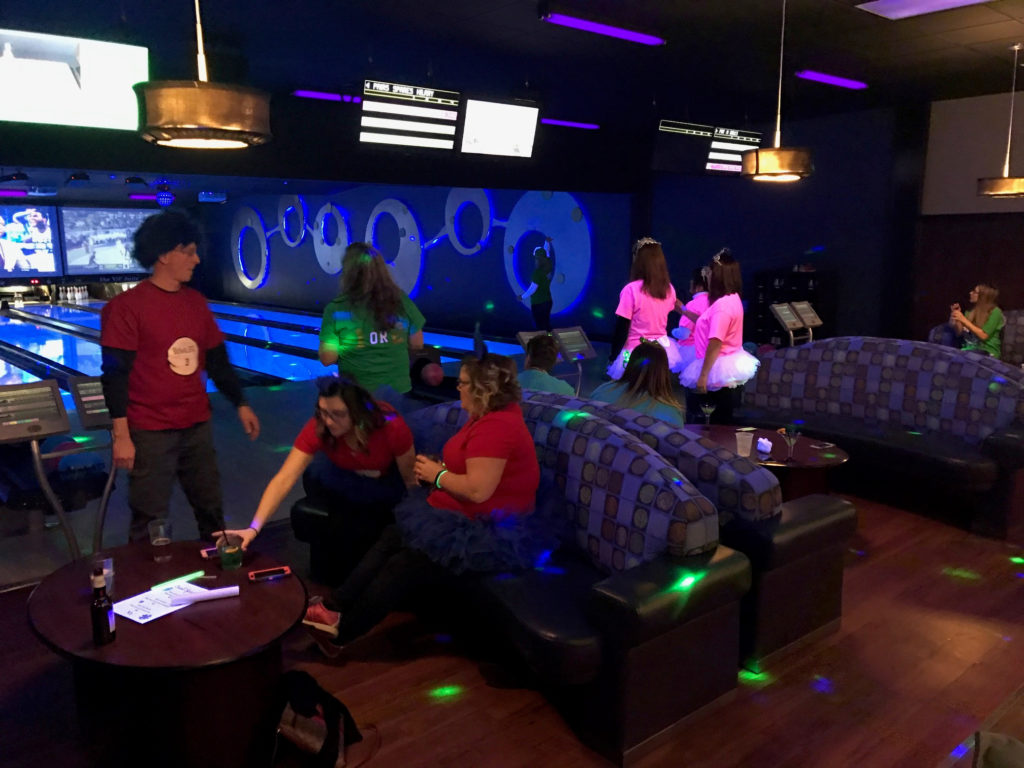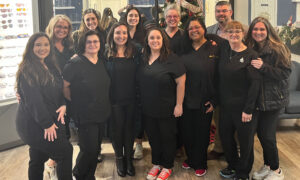By Dave Anderson, OD

March 14, 2018
Your staff is your practice’s most valuable asset. They are on the front lines with patients, setting the stage for your exam, and following up to capture prescriptions and pre-appoint. For all those reasons, it’s best to motivate them with incentives that can spur sales and profitability.
It Takes a Team
I approach most of the incentives in my office as a collective effort, and I reward based on this premise. A team is needed to make the entire experience count. I cannot reward an optical staff member for selling second pairs if my pre-testing staff gave the patient a bad experience, and the patient will never come back. We all have an impact on the outcome, and this outcome affects the patient’s likelihood to purchase during their visit, as well as the chances of them returning and referring others to our office.
We also offer individual incentives, but the biggest focus is on the team effort. We have several specific team incentives, including: reaching a percent of refractions having Optomap done (over 80 percent), anti-reflective lens treatments sold as a percent of total glasses sold (over 80 percent), premium lens materials (under 5 percent CR39), percentage of year supplies sold (over 70 percent) and percentage of direct shipped orders (over 60 percent).
We also have thresholds that must be met, so we don’t only sell five pairs of glasses with all the best product. We tie the glasses incentives to 50 percent capture rate, and contact lens incentives to a percent of those purchasing, versus the contact lens exams (80 percent). After we implemented these incentives, our sales numbers improved significantly. Our AR lens sales went from 55 percent to 92 percent, premium lenses from 62 percent to 98 percent, year supply from 55 percent to 75 percent and direct ship from 28 percent to 72 percent. Our goal for Optomap was 80 percent patient acceptance, and we have been averaging nearly 90 percent for over two years.

Dr. Anderson’s staff at outing to celebrate the practice’s success. Dr. Anderson says setting group goals, which are then rewarded when accomplished, lifts employee morale.
The incentives are $50 for each employee for each measured area, and if we hit three consecutive months of the incentives in all areas, they are given an additional “major award,” which can range from a happy hour at the end of a work day, with an hour of paid time to snack and mingle instead of seeing patients, to a gift card of $100 for each employee.
For our individual incentives, the biggest one we use is the employee of the month, as voted by our staff. The voting process is to use a form praising a fellow employee for a “winning moment” where they either went above and beyond to help a patient, or where they helped another employee do their job better or finish a product faster. They win by having the most “winning moment” cards turned in with their name. This employee is recognized in front of the whole staff, given a $100 gift card to their favorite restaurant, a candy bar of their choice at the end of each week the next month and the best parking spot. We also share the news on our web site, our Facebook page and with a plaque to show all our patients as they arrive.
Calculate ROI of Your Incentive Program
We spend approximately $50,000 a year on incentives, mostly because we reach our goals almost every month, but also because we have a large staff of 18 staff members.
We saw a direct and immediate impact once we implemented our incentive program. As illustrated above, based on the increases in product and premium mix, we saw an increase in revenue nearly $25,000 per month, or $300,000 a year.
The net profit was nearly $130,000 after incentives and paying for cost of goods. While it seems like a significant amount of work, and potential stress for staff, we have found providing goals and direction has led to a more focused staff. When they understand their hard work is paid out, they continue to remain focused on the end game of great customer service and high-quality products for our patients. After all, when we have patients in our office, we have a captive audience that is ready for our best recommendation–and now we are providing this to them.
We have always looked at many ways to incentivize our staff, and keep them engaged Money has always been preferred by most, but when we do the “major award” for consecutive targets met, we give 3-4 options for our staff to vote on. In the past we have done a spa day, $100 gift card, target shooting and paid-for happy hour, and all have been successful. The main goal of these extra activities is to provide a thanks for the hard work and recognize them for their effort, but we also like to have it as a bonding time with our team.
Create Short-Term, Targeted Incentives
We do small individual incentives typically around something we see as a challenge ahead of us. For example, if we are discontinuing sales of a frame line, and have to move product, we give an incentive reward to the staff member who sells the most.
We also have used individual incentives to help manage our schedule. If we look at our at our schedule, and see that it is booked too full for our liking, we have a contest for whoever can pretest the most, which ends up motivating employees to be quicker at grabbing a patient to start their exam.
Another area where incentives can have a huge impact is if a patient cancels their appointment. Our front desk is challenged to fill the spot, and whoever fills it first is given a gift card, or other reward, such as leaving 20 minutes early with pay.
 Dave Anderson, OD, is a partner with Miamisburg Vision Care in Miamisburg, Ohio. To contact: doca@burgvision.com
Dave Anderson, OD, is a partner with Miamisburg Vision Care in Miamisburg, Ohio. To contact: doca@burgvision.com

























